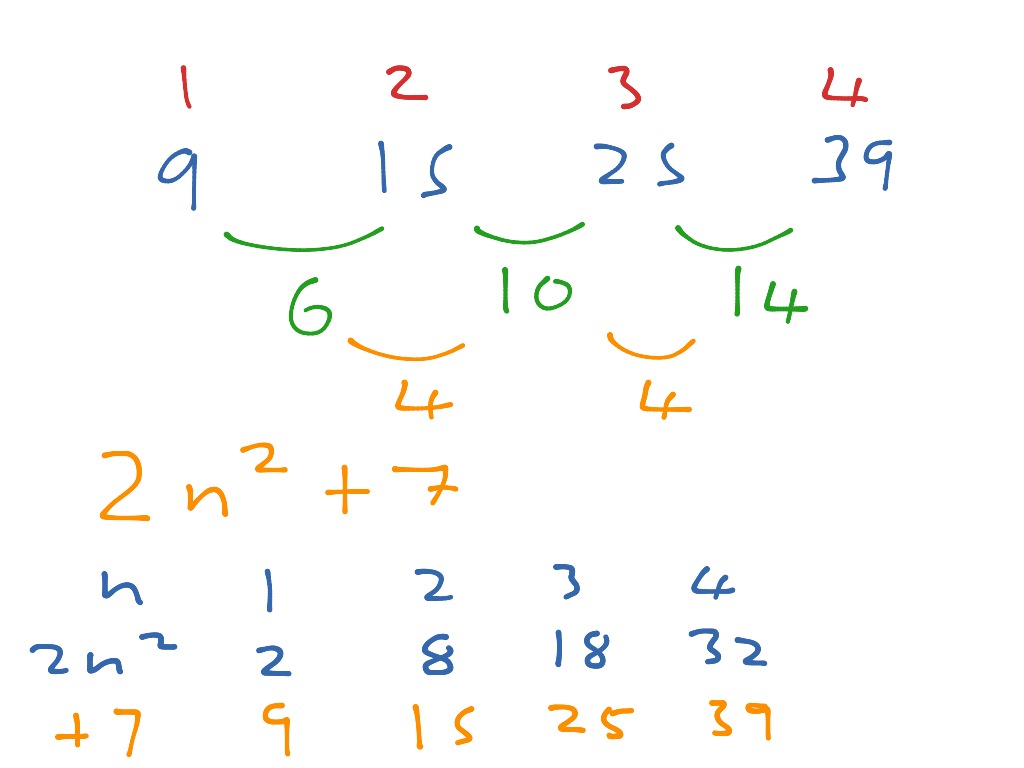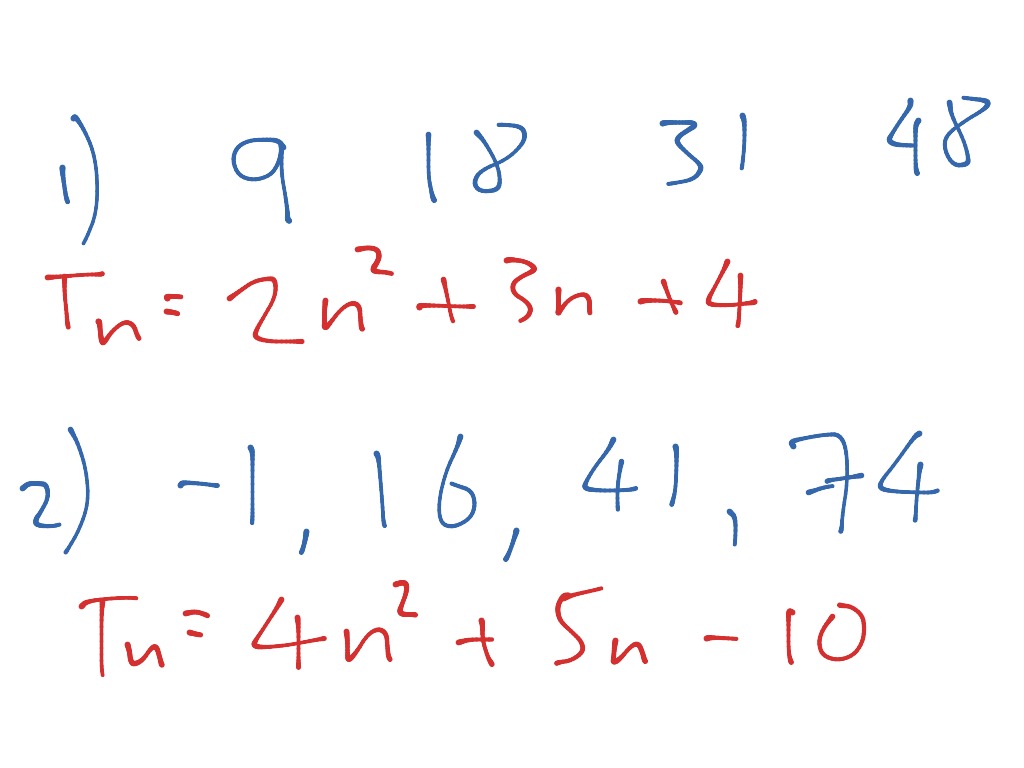

So Pattern D does not have a step with 167 tiles.

For example, they could be asked to "draw the next step" for one or more patterns. If not, students might benefit from additional questions to familiarize themselves with the idea. Ideally, students will have had some experience working with visual patterns prior to this task. That the domain of these quadratic functions is the set of positive integers provides an interesting wrinkle which students might not be used to thinking about in the setting of quadratic functions. The functions roughly increase in complexity through the three tasks, with the intent that the techniques learned in each will be used and expanded in the subsequent tasks. The other tasks in the sequence are Quadratic Sequence 1 and Quadratic Sequence 3. However, seeing structure is emphasized in the standards because of how it connects and helps in understanding many foundational concepts, and these tasks develop the ability to see structure when working with quadratic expressions and equations.

Students are asked to analyze the functions in the context of questions about the sequence of figures, a process which involves manipulating the quadratic expressions into different forms (identifying square roots at first, then completing the square in the third task.) With solving quadratics, there can be an impulse to put everything in standard form and just use the quadratic formula.

This task belongs to a series of three tasks that has students process a sequence of tile figures with the property that the $n$-th figure in the sequence has $f(n)$ tiles, for some quadratic function $f$.


 0 kommentar(er)
0 kommentar(er)
